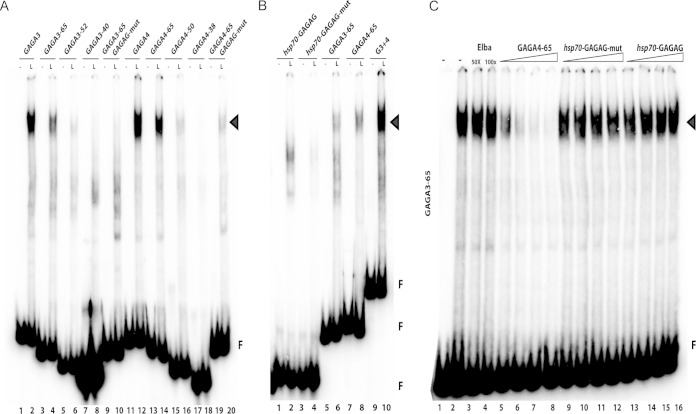FIG 5.
Identification of the LBC binding sequence. (A) EMSAs were performed with a series of truncations of the 80-bp GAGA3 and GAGA4 probes. For GAGA3, the truncations were 65 bp, 52 bp, and 40 bp in length. For GAGA4, the truncations were 65 bp, 50 bp, and 38 bp in length. The GAGAG motifs within GAGA3 and GAGA4 were mutated to ACAAA to produce two 65-bp fragments, GAGA3-65 GAGAG-mut and GAGA3-65 GAGAG-mut. Each subfragment was incubated with nuclear extracts from late (L; 6- to 18-h) embryos. (B) EMSAs were carried out using a probe, hsp70-GAGAG, that spans a previously characterized GAF binding sequence in the hsp70 promoter (69, 70). The GAGAG sequence within the hsp70 promoter was mutated to TCTCT to generate probe hsp70-GAGAG-mut. (C) Labeled GAGA3-65 was incubated with nuclear extracts from late (6- to 18-h) embryos in the absence (lanes 1 and 2) and presence (lanes 3 to 16) of unlabeled cold competitor as indicated above the lanes. A 5-, 10-, 50-, or 100-fold excess of the cold competitor (from the left to right lane, respectively) of each set was added to the reaction mixture. Arrowheads, LBC; F, free probe.

